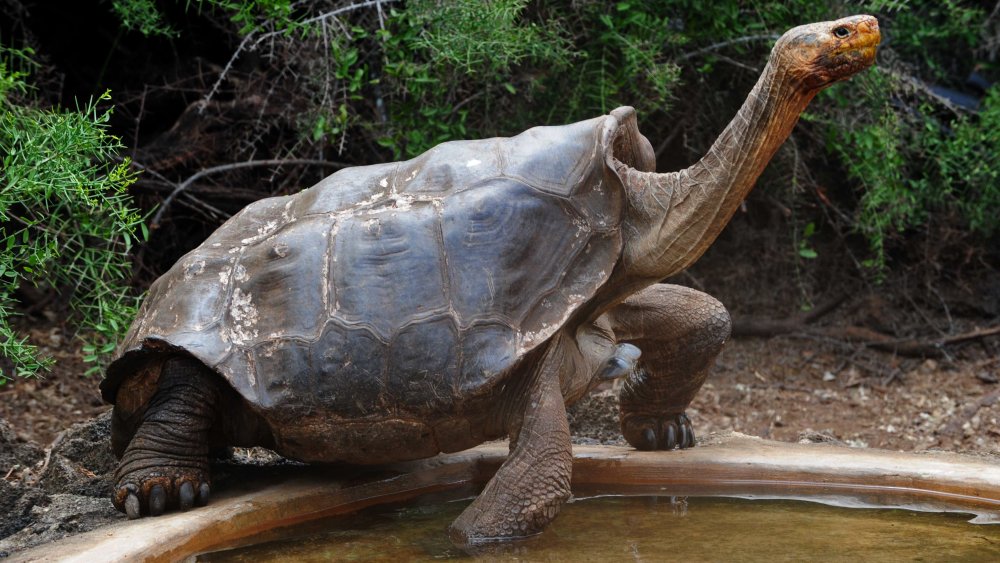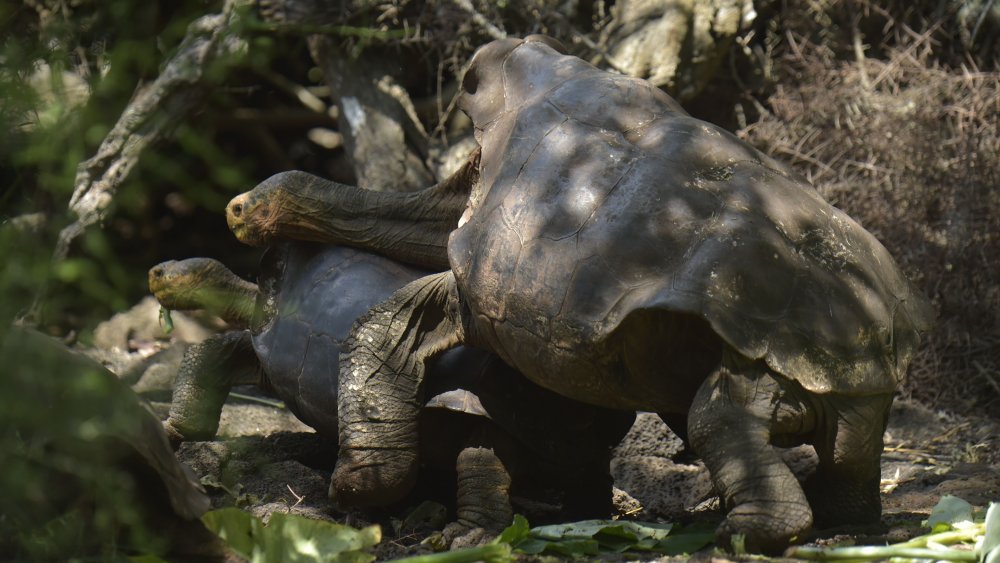Stud Tortoise Saves Species From Extinction By 'Getting Busy'
If you're a fan of shelled reptiles and their thrusty antics, then you may have come across a YouTube clip of a turtle trying to make sweet love to a Crocs shoe. The turtle, whom we've decided to call Dong-atello, squeaks with excitement as he pounds the shoe with his bulging bō staff. The love machine keeps plugging away, painfully unaware that he's the little engine that couldn't. No matter how hard our Dong-atello tries, he won't come out on top because Crocs aren't a reptile that he can start a family with.
In fairness to Dong-atello, turtles have been known to ride crocodiles in the wild to get from point A to point B. But when it comes to inserting tab A into slot B, failing to discriminate between a shoe and an animal you can knock boots with sounds like a shortcoming worthy of a Darwin Award. However, when the fate of your species is on the line, bangers can't be choosers. And as an extremely amorous tortoise proved, sometimes survival of the fittest means fitting into any partner that won't shoo you away.
Getting over the hump
If ever a group of turtles deserved some love, it was the Chelonoidis hoodensis. A species of giant tortoise native to the Galapagos archipelago, they aren't just goliath reptiles — they're giants of science. Phys.org reports that the only members of Chelonoidis hoodensis that reside in the wild are found exclusively on the island of Espanola. When Charles Darwin visited the Galapagos in 1835, his crew rescued a man stranded on Española, according to Smithsonian, and Darwin's encounter with the archipelago allegedly converted him from creationism to evolutionism. So when natural selection threatened the existence of Española's shelled celebrity, the Charles Darwin Research Station stepped in to make another rescue by creating more tortoises.
Per the San Diego Zoo, in the 1960s, Chelonoidis hoodensis was declared critically endangered. Only two males and 12 females called Española home, and if they wanted to make a booty call it, it would have been long distance because the tortoises simply lived too far apart. They were placed under the protection of the Charles Darwin Research Station, but they still needed a a giant tortoise with a giant sex drive. Enter the San Diego Zoo's resident stud, Diego, who did enough entering to father an estimated 1,700 offspring over the course of a few decades. Luckily, giant tortoises have really long lives.

